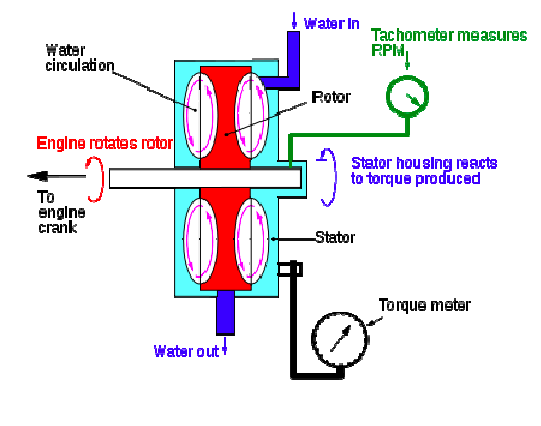Explain working of hydraulic brake dynamometer with sketch.

Hydraulic dynamometer is also called as water brake absorber. Invented by British engineer William Froude in 1877 in response to a request by the Admiralty to produce a machine capable of absorbing and measuring the power of large naval engines, water brake absorbers are relatively common today. The schematic shows the most common type of water brake, known as the "variable level" type. Water is added until the engine is held at a steady RPM against the load, with the water then kept at that level and replaced by constant draining and refilling (which is needed to carry away the heat created by absorbing the horsepower). The housing attempts to rotate in response to the torque produced, but are restrained by the scale or torque metering cell that measures the torque.
